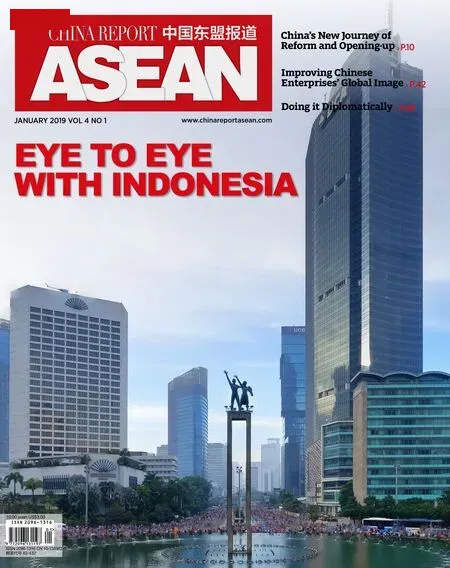SONG HONG: NEW MEASURES FOR DEEPENING REFORM AND OPENING-UP

The annual Central Economic Work Conference concluded with a statement that ensuring sound economic work is especially important for 2019, which marks the 70th anniversary of the founding of the People’s Republic of China. It is also crucial for building a moderately prosperous society in all respects.One key task is to advance all-round opening-up.
Driven by domestic growth and external pressure, China will make great strides in opening wider to the outside world. After 40 years of reform and opening-up, the balance between supply and demand in China has undergone fundamental changes. The once widespread shortage in supply has evaporated. The entire economy has entered a new stage of development.Some labor-intensive industries have transferred to neighboring countries and regions, some industries began to experience overcapacity, and others began to introduce competition through opening-up to achieve a higher level of development. Due to expansion of domestic demand and consumer expectation for diversity and quality, increasing supply through the expansion of imports is necessary.China and the world are experiencing growing intrinsic demand for China’s economic opening-up.
It should be stressed that over the last 40 years, China’s reform and openingup has been carried out in the open economic environment created by the Western countries after World War II.This rules-based system has objectively provided a strong external guarantee for China’s reform and opening-up. The multilateral trading system provides not only a uni fied, transparent and secure external market, but also a rules-based trade dispute settlement mechanism for developing countries.However, after the financial crisis in 2008, Western countries have called for more equal market access and fair trade. In the future, China’s opening-up will face increasing external pressure.
The Central Economic Work Conference clearly pointed out that China will advance all-around openingup in 2019. The following concrete measures will be taken:
Ease Market Access
A comprehensive regulatory system for foreign capital based on preestablishment national treatment with a negative list will be put into force to protect the interests of foreign companies in China, especially intellectual property rights. Wholly foreign-funded enterprises will be able to operate in more areas. Since 2018, the management model of market access by foreign investment has turned from industrial classi fication to a negative list, and the number of industries on the negative list has been reduced from 63 to 48. In 2019, China will further implement its commitments in accordance with the negative list and the timetable for opening some of its industries and legally guarantee the national treatment and basic rights and interests of foreign-funded enterprises.
Increase Imports and Exports
China will push for a more diversi fied export market and cut the institutional costs of importing procedures. The Chinese market seems under a high degree of protection through tariffs. In 2017, for example,China’s average tariff was 9.8 percent,but in terms of actual revenue, it was only 5.07 percent simply because of the zero-tariff treatment for processing trade, which accounts for more than half of China’s imports, as well as other imports under special customs supervision. The cost of import transactions will be lower with trade liberalization and facilitation and streamlined customs procedures.
Promote Economic Globalization
China will promote the building of a community with a shared future for mankind, the reform of the WTO, and trade and investment liberalization and facilitation. As an old saying goes,it takes a good blacksmith to make good steel. With the further opening of its own market, China will be able to advocate free trade more actively on multilateral platforms such as the WTO and promote economic globalization.
I believe that China’s reform and opening-up in the new era has three important features:
First, the transition from the opening to free flow of commodities and factors of production to opening to systems such as rules.
Second, more attention will be placed on market liberalization to give full play to the role of enterprises and effectively control all kinds of risks.
Third, a new pattern of openingup will be shaped through effective interaction with major Western countries.
From a long-term perspective, the presupposition of a stable, established external market is a thing of the past.There is a growing need for China and the United States, or China and the West, to build a new type of cooperative relationship through negotiation and consultation.

